+Search query
-Structure paper
| Title | Structural insight into apelin receptor-G protein stoichiometry. |
|---|---|
| Journal, issue, pages | Nat Struct Mol Biol, Vol. 29, Issue 7, Page 688-697, Year 2022 |
| Publish date | Jul 11, 2022 |
 Authors Authors | Yang Yue / Lier Liu / Li-Jie Wu / Yiran Wu / Ling Wang / Fei Li / Junlin Liu / Gye-Won Han / Bo Chen / Xi Lin / Rebecca L Brouillette / Émile Breault / Jean-Michel Longpré / Songting Shi / Hui Lei / Philippe Sarret / Raymond C Stevens / Michael A Hanson / Fei Xu /    |
| PubMed Abstract | The technique of cryogenic-electron microscopy (cryo-EM) has revolutionized the field of membrane protein structure and function with a focus on the dominantly observed molecular species. This report ...The technique of cryogenic-electron microscopy (cryo-EM) has revolutionized the field of membrane protein structure and function with a focus on the dominantly observed molecular species. This report describes the structural characterization of a fully active human apelin receptor (APJR) complexed with heterotrimeric G protein observed in both 2:1 and 1:1 stoichiometric ratios. We use cryo-EM single-particle analysis to determine the structural details of both species from the same sample preparation. Protein preparations, in the presence of the endogenous peptide ligand ELA or a synthetic small molecule, both demonstrate these mixed stoichiometric states. Structural differences in G protein engagement between dimeric and monomeric APJR suggest a role for the stoichiometry of G protein-coupled receptor- (GPCR-)G protein coupling on downstream signaling and receptor pharmacology. Furthermore, a small, hydrophobic dimer interface provides a starting framework for additional class A GPCR dimerization studies. Together, these findings uncover a mechanism of versatile regulation through oligomerization by which GPCRs can modulate their signaling. |
 External links External links |  Nat Struct Mol Biol / Nat Struct Mol Biol /  PubMed:35817871 PubMed:35817871 |
| Methods | EM (single particle) / X-ray diffraction |
| Resolution | 2.7 - 4.21 Å |
| Structure data | EMDB-32243, PDB-7w0l: EMDB-32244, PDB-7w0m: EMDB-32245, PDB-7w0n: EMDB-32246, PDB-7w0o: EMDB-32247, PDB-7w0p: 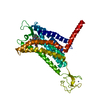 PDB-7sus: |
| Chemicals |  ChemComp-ZN: 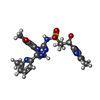 ChemComp-8EH: 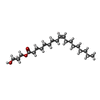 ChemComp-OLC:  ChemComp-HOH: |
| Source |
|
 Keywords Keywords | MEMBRANE PROTEIN / GPCR / Class A GPCR / small molecule / Apelin receptor / Complex / Dimerization |
 Movie
Movie Controller
Controller Structure viewers
Structure viewers About Yorodumi Papers
About Yorodumi Papers




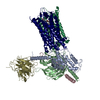

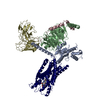

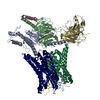

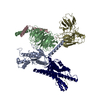

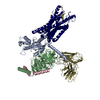
 homo sapiens (human)
homo sapiens (human) clostridium pasteurianum (bacteria)
clostridium pasteurianum (bacteria)